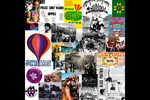NOTE: all images on this page are viewable in high resolution (click
on the image to bring up the larger version). When done, click your
browser's "Back" button.
Title: Photographs by William Gedney from San Francisco as they
relate to the group The Diggers, including contact sheets, notebook
images, and proofs. Citation:
William Gedney
photographs and papers, 1887, circa 1920, 1940-1998 and undated,
bulk 1955-1989, Collection #RL.10032, David M. Rubenstein Rare Book &
Manuscript Library, Duke University.
When I first discovered Gedney's photography archive in 2002, one of
the bonuses was that the Duke librarians had scanned many of the small
notebooks that the artist carried with him to jot down the particulars
of each photo shoot. So for example, here is a page from one of the
notebooks in 1966, after he had received the Guggenheim Fellowship and
set off on his cross-country trek. On August 25, 1966, Gedney was at the
Iowa State Fair. You can see how diligent he was in recording the roll
of film he was shooting (TX, for Tri-X, roll #178) and the camera
settings (aperture and shutter speed).
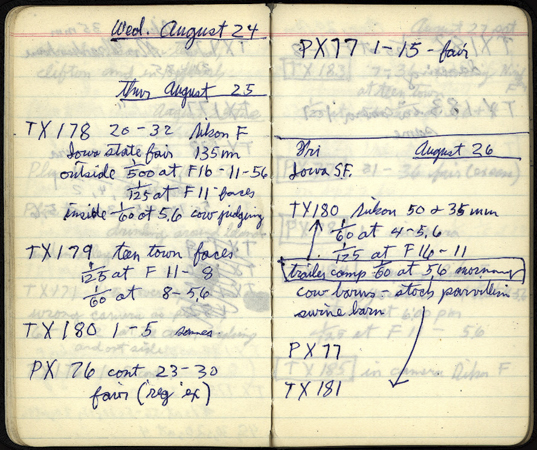
After discovering the recent batch of scanned prints that Duke had
processed since I last visited in 2017, it has been a special treat to
connect Gedney's notebook jottings with these higher resolution images.
(See below under "Notebooks" for a dip into this exercise of archival
consanguinity. In addition to his detailed jottings of camera and location settings,
Gedney also was an incessant scribbler, jotting down excerpts and quotes
from books he had read and the lyrics of popular songs. Under the
"Writings" category (below) is an example that is pertinent to the
Diggers and Gedney's musings on the meaning of the events he was
witnessing.
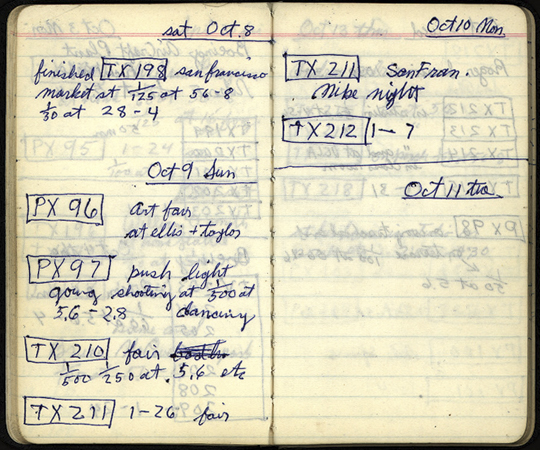
The first encounter that Gedney had with the burgeoning youth culture
was the Artists Liberation Free Fair in the parking lot next to Glide
Memorial Church on October 9, 1966. (The fair was a two-day affair.
Gedney got there on Sunday, the second day.) Here are a few of his
photos that depict the joyful abandon that would come to typify outdoor
gatherings of the Sixties. See
here for more.
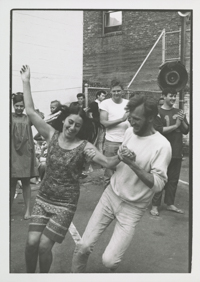 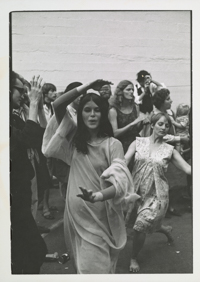 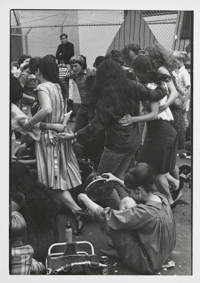
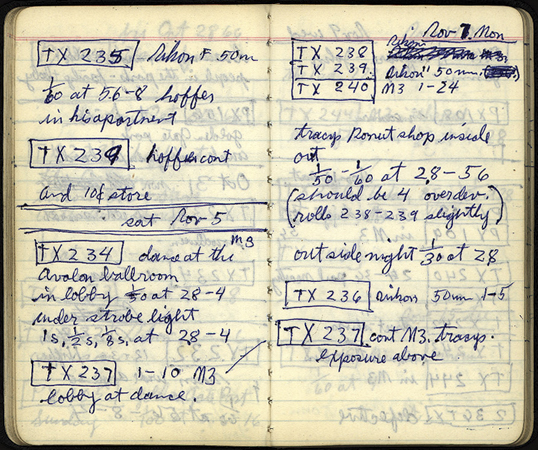
A month lapses before we find Gedney again in the midst of the
happenings and street activity. I have not been able to locate his
photos of the Avalon Ballroom, but his series of photos at Tracy's Donut
Shop is extensive. Here are a handful. See
here for more.
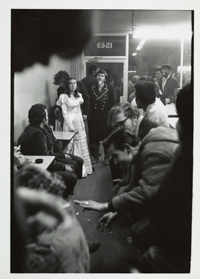 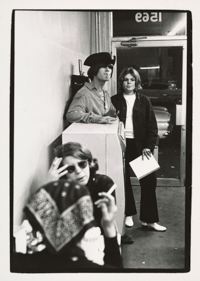 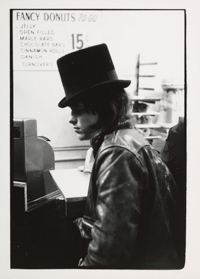
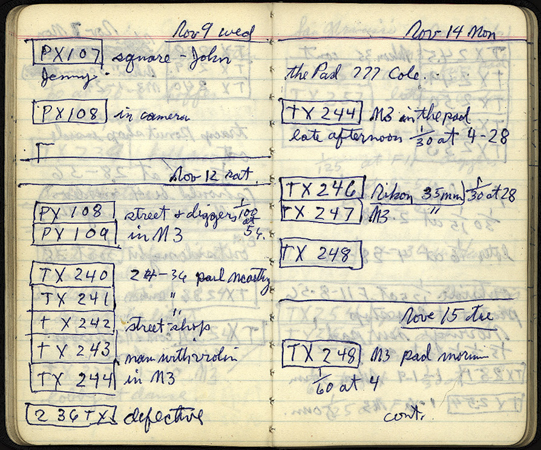
The first evidence of Gedney's encounters with the Diggers is on
November 12, 1966 at one of the first Digger Free Feeds in the
Panhandle. We see many of the original group that coalesced rapidly
after Emmett and Billy first brought Digger stew to the intersection of
Oak and Ashbury streets in the midst of the National Guard occupation of
San Francisco the first week of October. Here are a few of these photos.
See here for more.
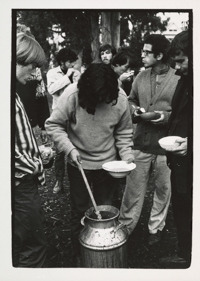 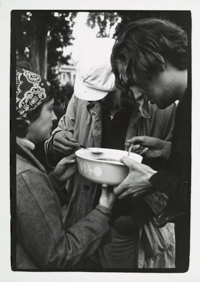 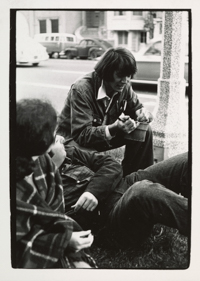
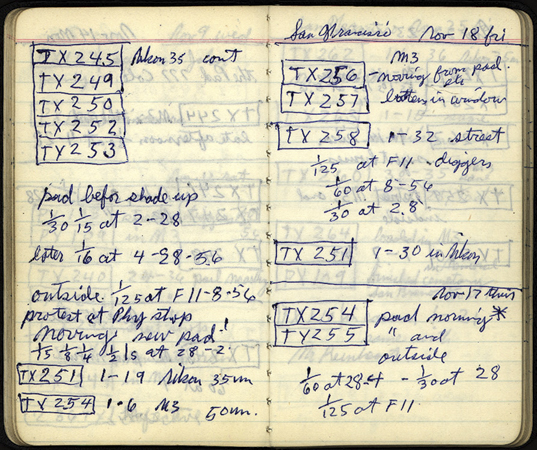
On November 15, 1966, two vice cops busted Allen Cohen who was
working the cash register at the Psychedelic Shop on the grounds of
selling obscene material — Lenore Kandel's Love Book. The
subesequent trial was the longest criminal proceeding in San Francisco
history and catapulted the new bohemian community that was coalescing in
the Haight-Ashbury into action. Gedney happened to be on Haight Street
as the community reacted immediately to the arrests. Here are a few of
this series (most of which has not been printed and scanned yet). See
here for more.
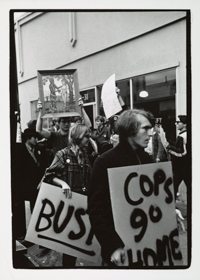 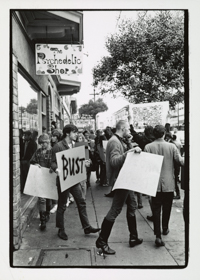 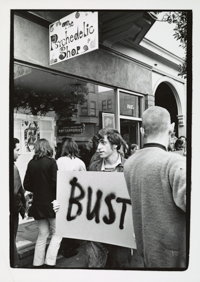
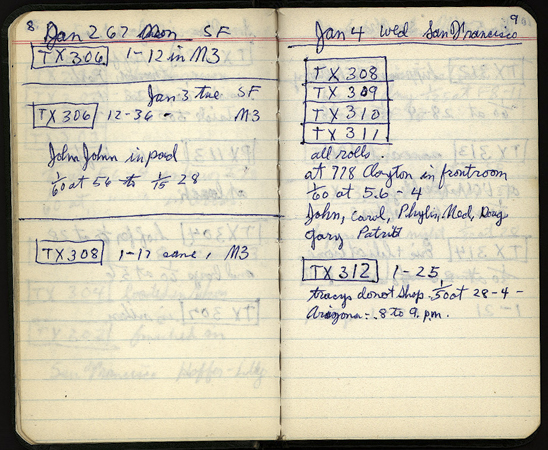
After Gedney took a side trip to southern California he arrived back
in San Francisco at the beginning of January, 1967. Here we see notes on
the series of photographs he took at 778 Clayton Street, one of the
Digger pads that would become famous in the coming months. We see photos
of several of the mainstays to the early Digger movement, including
Phyllis and John John. See here
for more.
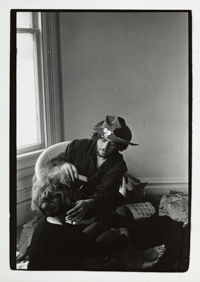 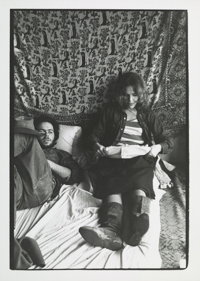 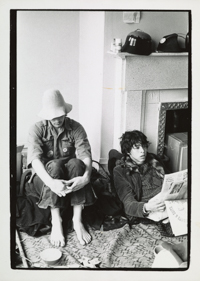
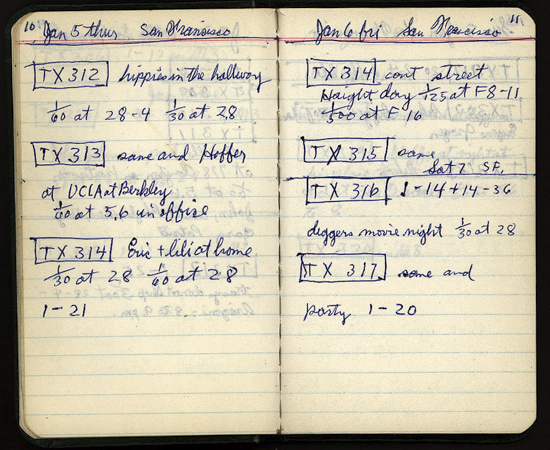
Gedney doesn't seem to have any photos of the first Digger Free Store
on Page Street, which was named the "Free Frame of Reference" and which
opened in November but he did visit the second one which was located on
Frederick Street. He was there for the "diggers movie night" on Jan. 7,
1967 (as noted above). Here are some photos from that event. See
here for more photos from the
Frederick St free store.
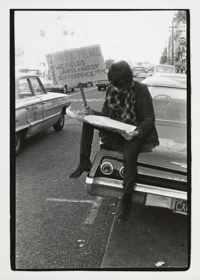 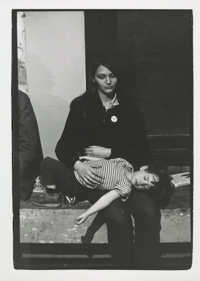 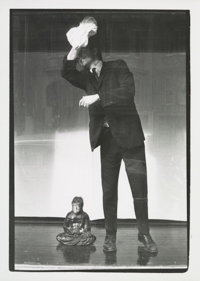
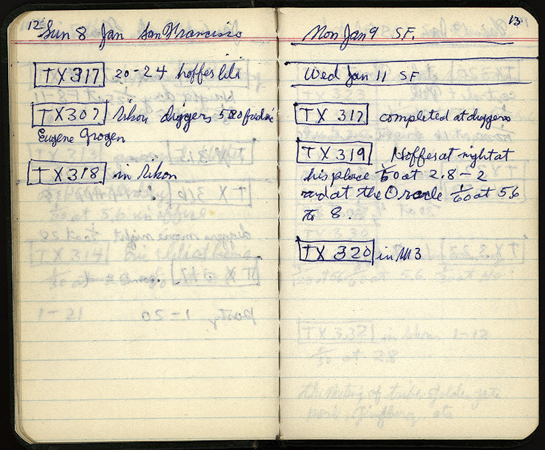
Gedney appears to have come back the next day (January 8, 1967) to
continue taking photos of the second Digger Free Store at 520 Frederick
Street. Interestingly he notates one of the Diggers in his jottings,
"Eugene Grogen" (sic) which is possibly how Emmett Grogan was
introducing himself to strangers. Here are some of Gedney's photos where
Emmett appears. And here are
more photos from the Frederick St free store.
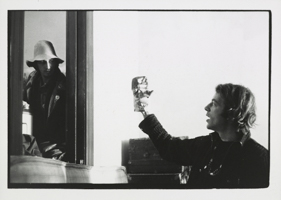 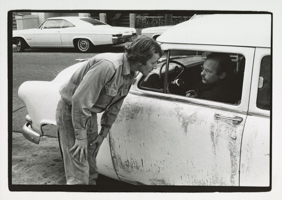
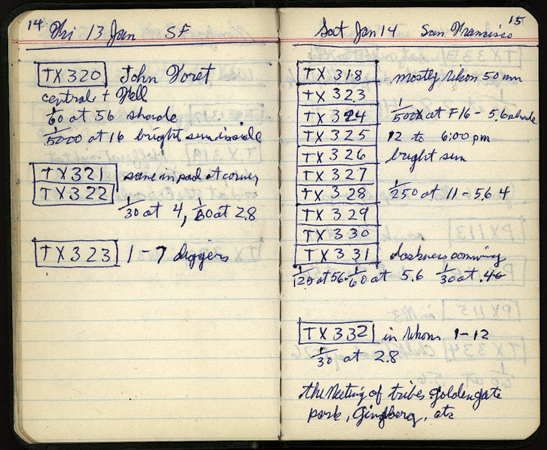
On January 14, 1967, the "Human Be-In / Gathering of the Tribes" took
place in Golden Gate Park at the Polo Field and Bill Gedney was there
and took hundreds of photographs. What I find particularly interesting
is that Gedney's lens was focused on the crowds and not the stage. The
Be-In (as it came to be known) would become the model for communal and
collective counterculture celebrations in the coming decade. Compare
these photos with those from the Kaliflower Intercommunal Carnival five
years later to get a sense of the cultural evolution that took place in
that short span of time. Click here
for more photos of the Be-In. Click
here for the
Kaliflower Intercommunal Carnival in 1972 to compare and contrast the
two celebrations.
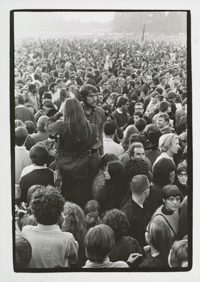 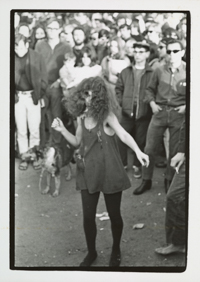 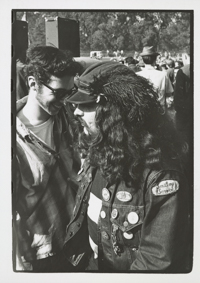
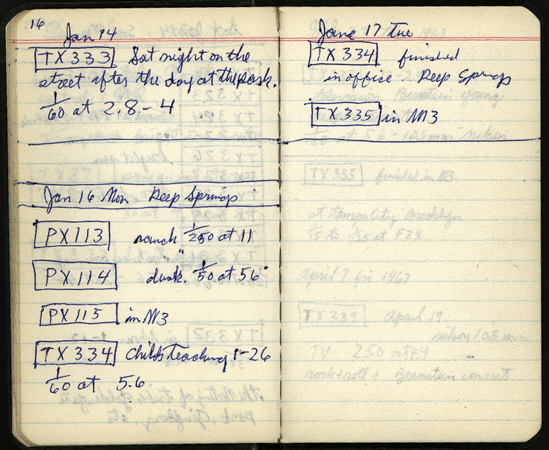
The final listing of photos that Gedney shot in the Haight-Ashbury
was the night of the Human Be-In on the streets. I'm not completely sure
if the following are from that series but it seems likely they are.
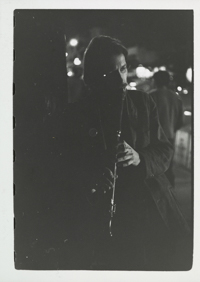 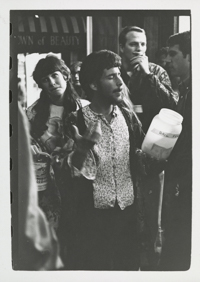 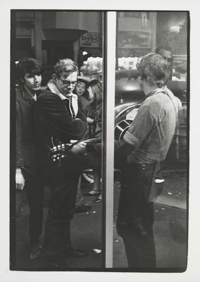
Scattered in and among Bill Gedney's exacting notes on film speed,
exposure settings, and details on people and places are jottings he
wrote down of his thoughts on what he was experiencing. He also used his
notebooks to record song lyrics and quotations he had read. Here is a
sequence he wrote in 1967 after visiting and immersing himself in the
burgeoning youth culture that was emerging in the Haight-Ashbury. Note
the place of importance he gives to the Diggers ("the diggers perhaps
represent the true meaning of the movement..."). Interestingly, this
quote appeared in the 2000 book of his photographs in the chapter on San
Francisco. However, no where in that book nor on the Duke University web
site was there ever any recognition on the part of the curators that Gedney had borne witness through his lens to the birth of the Digger
social movement that would have ripple effects throughout radical
history in the coming decades.
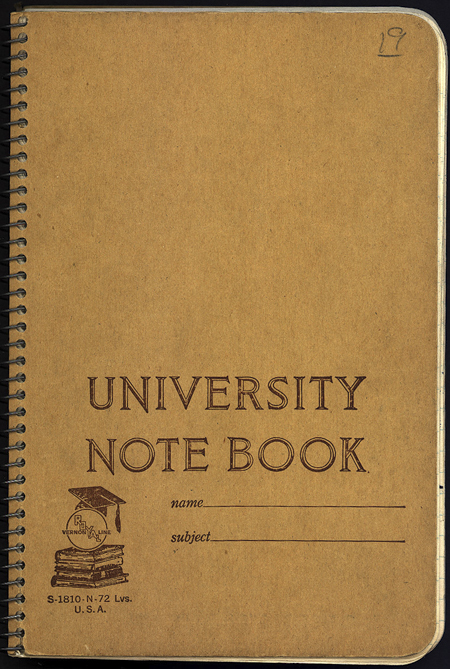
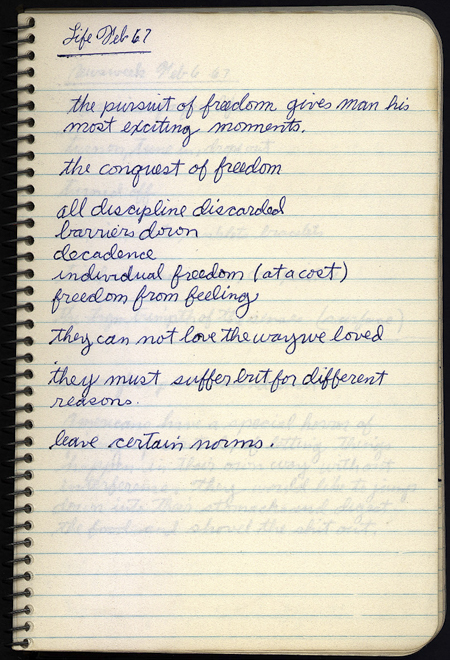
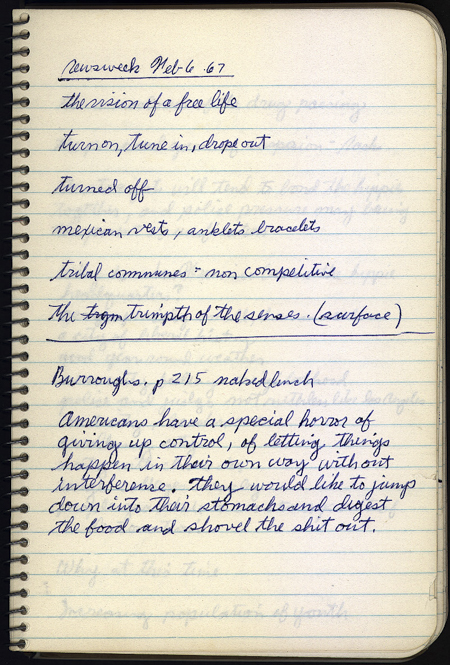
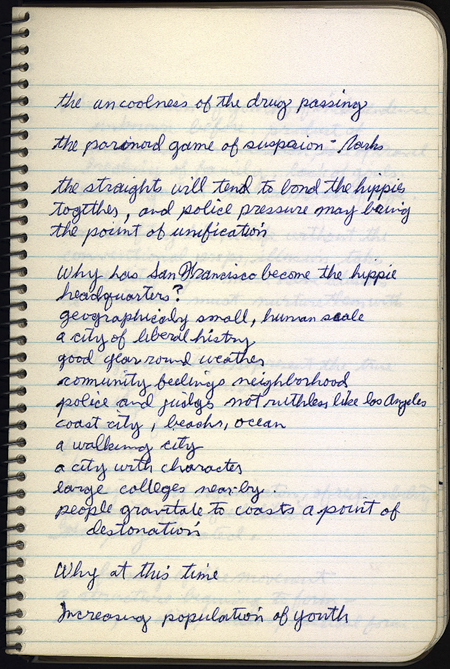
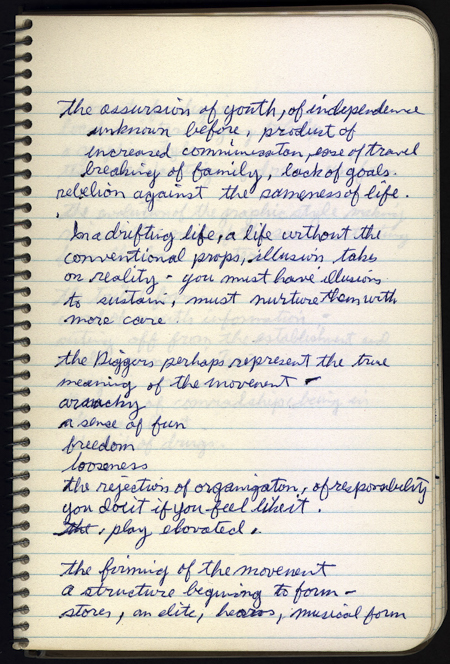
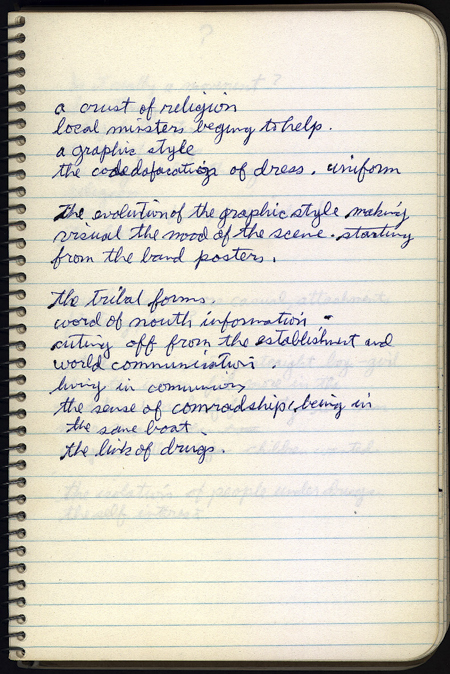
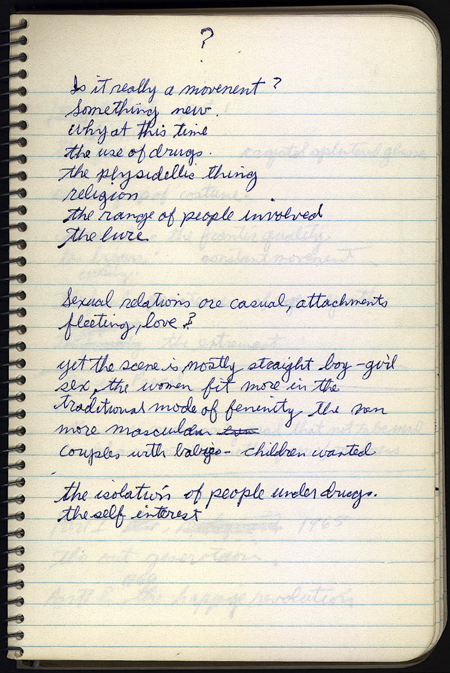
|
